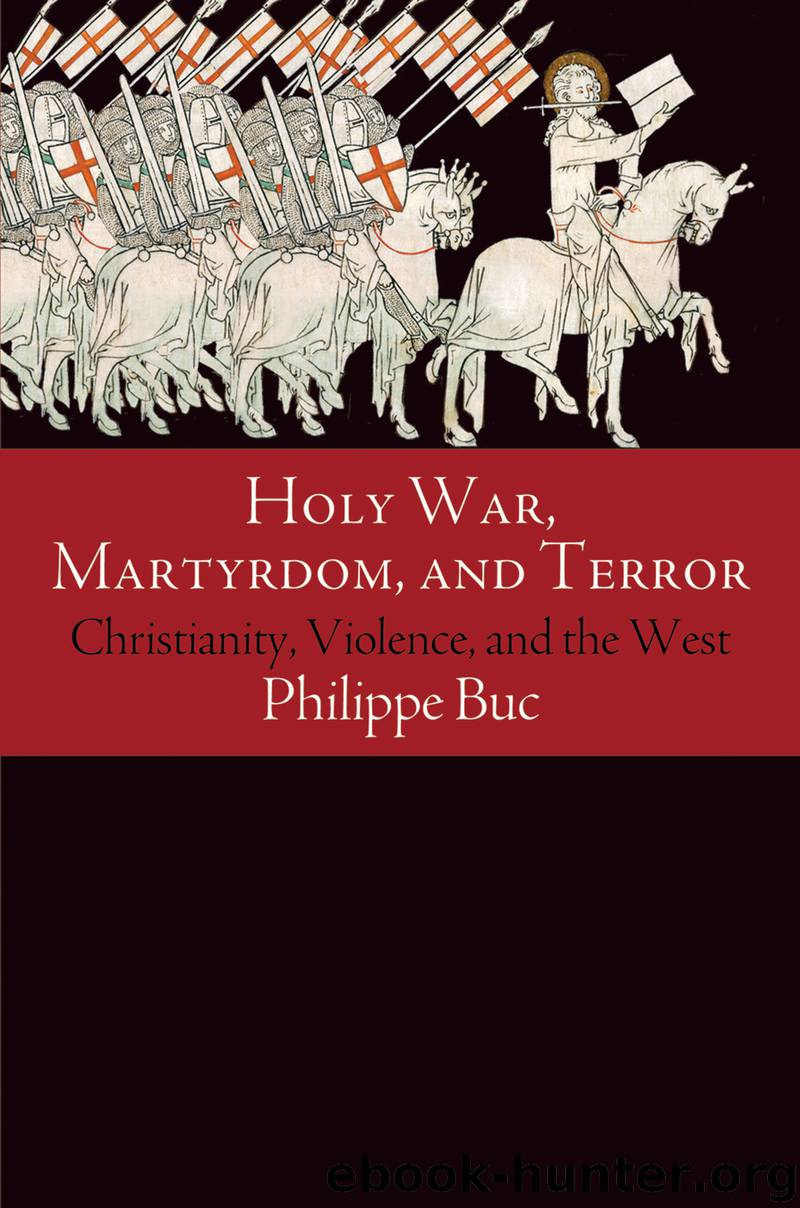Holy War, Martyrdom, and Terror by Buc Philippe;

Author:Buc, Philippe;
Language: eng
Format: epub
Publisher: University of Pennsylvania Press
Published: 2019-03-15T16:00:00+00:00
The Searing Light of the Enlightenment
Whoever refuses to obey the general will shall be constrained to do so by the entire body [politic]; which means nothing other than that he shall be forced to be free.99
If the French Revolution was the child of the Enlightenment (a genealogy historians debate), it was a shocking offspring. But then, despite Voltaire and the Encyclopédie, the men and women of 1789 did not necessarily associate with the Enlightenment what we now attach to it—tolerance and peace. Or it may have been, simply, that the new developed in the chrysalis of the old (a historian’s metaphor interestingly indebted to theology). Drumming the Revolution’s victory, in November 1793, Jean-Baptiste Carrier told the Comité de Salut Public that “prejudices and fanaticism were crumbling down under reason’s irresistible force” (préjugés et fanatisme, tout croule aujourd’hui devant la force irrésistible de la raison)—a program the present Western world in its majority would approve of—but Carrier pursued in the same breath, unacceptably to the same, that “philosophy’s flaming torch sheds light on everything and burns its enemies” (le flambeau de la philosophie éclaire tout, brûle ses ennemis). The second part of Carrier’s formula sits ill-poised next to the first part’s proclamation of the sweeping away of fanaticism.100 The same Comité exhorted its representatives to the Nation’s army on France’s northern borders to “take to the traitors light and the sword.” This was a revealing and aggressively hot torch, which animated its bearers with “flaming zeal,” a “zeal” that should be transported “wherever mission called.”101 How far then was the light of the Enlightenment from the fire of the stake? Guibert of Nogent had paired the fire of “spiritual teachings” and the destructive fire of crusading purge. Facing a perceived emergency, Robespierre deployed a similar dyad: “One must smother the Republic’s internal and external enemies, or perish with it. In this situation, the first axiom of your policy must be that one leads the people through reason, and the people’s enemies through terror.”102 Guibert and Robespierre paired; others, like Carrier, blended. In his Hymn on Lawrence, Prudentius had sung that “the fire that Eternal God is … both fills the just and burns the guilty.”103 Here was a fire singly of zeal and of vengeance (a word that the more radical revolutionaries readily uttered). It had long been at home in Catholic France. Placed in a memorial chapel for the two murdered Guise brothers in Lyon, between two pyramids (one for each man), “there was a flaming and burning heart, a hieroglyph for the zeal, the love, and the burning affection that these princes had for the Fatherland”; it also “signified the conflagration and general combustion that their having been massacred [in Blois by the king’s guards] would bring against the enemies of God’s House … or the perpetual desire which ought to burn in Catholic souls to raise up their ashes through a just and legitimate vengeance.”104
The pairing of reason and terror or constraint was a Christian classic. Augustine had
Download
This site does not store any files on its server. We only index and link to content provided by other sites. Please contact the content providers to delete copyright contents if any and email us, we'll remove relevant links or contents immediately.
The Gnostic Gospels by Pagels Elaine(2383)
Jesus by Paul Johnson(2214)
Devil, The by Almond Philip C(2191)
The Nativity by Geza Vermes(2107)
The Psychedelic Gospels: The Secret History of Hallucinogens in Christianity by Jerry B. Brown(2068)
Forensics by Val McDermid(1966)
Going Clear: Scientology, Hollywood, and the Prison of Belief by Lawrence Wright(1870)
Going Clear by Lawrence Wright(1858)
Barking to the Choir by Gregory Boyle(1722)
Old Testament History by John H. Sailhamer(1708)
Augustine: Conversions to Confessions by Robin Lane Fox(1681)
The Early Centuries - Byzantium 01 by John Julius Norwich(1634)
A History of the Franks by Gregory of Tours(1628)
The Bible Doesn't Say That by Dr. Joel M. Hoffman(1603)
A Prophet with Honor by William C. Martin(1593)
Dark Mysteries of the Vatican by H. Paul Jeffers(1591)
by Christianity & Islam(1558)
The First Crusade by Thomas Asbridge(1531)
The Amish by Steven M. Nolt(1485)
